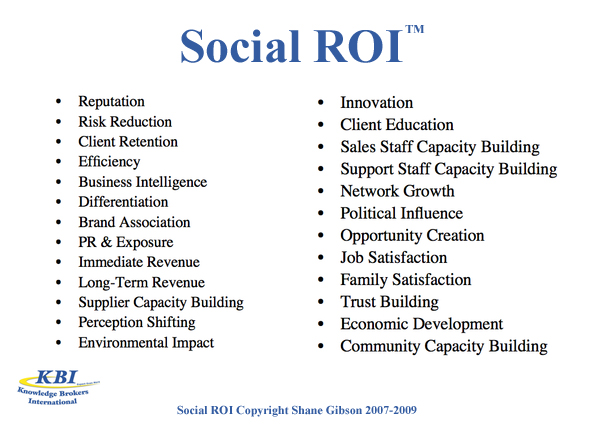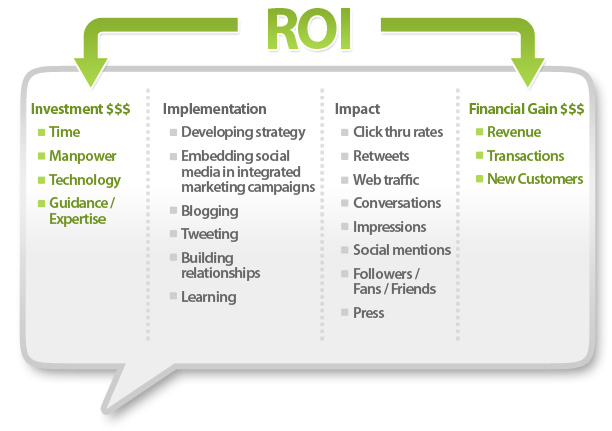There are plenty of ways to gauge the ROI of anything business-related, because it boils down to dollars and cents. Social ROI, on the other hand, isn’t as simple; it’s a composite of exposure and feedback that must be taken on a case-by-case basis.
What works for some won’t work for others, and one example of success isn’t a model that anyone can use.
The basics remain the same though, for instance:
“These findings mirror those from a previous report, detailing how consumers interact with brands on Facebook. The study found that 56% of consumers said they are more likely to recommend a brand to a friend after “Liking” a brand on Facebook, and 51% of consumers said they are more likely to buy a product after doing so. The findings from both studies seem to show that customer loyalty is about the same across both social networks.”
There isn’t a lot of evidence to gauge social media campaign efforts for local, small-businesses, but we’re guessing that it’s definitely greater–especially when compared with nation-wide brand results, like the above quote asserts.
In some cases, the results seem exponentially greater:
“A study of about 400 consumers carried out by Ogilvy and ChatThreads found that customers who were only exposed to KFC ads via social media were seven times more likely to spend more than those who didn’t see these ads.”
Social ROI can still seem like a foreign language to those not invested in social networks, but it is easy to break down. When you take a look at things from a cause-effect relationship, like below, you’ll end up with results you can gauge.

